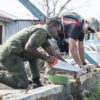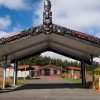By H. Smiler
The New Zealand Army accounts for 80% of the New Zealand Defence Force’s contribution to Operation Protect. Indeed, Operation Protect is the largest operational deployment of soldiers and officers from the New Zealand Army since East Timor between September 1999 and 2002. Whilst this support has been necessary and valued, it has been at the expense of the trained state of the New Zealand Army’s collective combined-arms capability.[i] Moreover, it has degraded the individual capability of the New Zealand Army’s junior leaders and skilled trade personnel.[ii] This is a confronting reality to accept when considering how the New Zealand Army approaches regeneration post Operation Protect. However, this reality presents senior leaders with an opportunity to reset how the New Zealand Army trains. As a result, this essay argues that any approach adopted by the New Zealand Army to regenerate individual and collective combined-arms capability post-Operation Protect should be guided by three principles.
Principle 1: Define the Output: What is a Multi-Role Battalion Group?
A successful regeneration plan for the New Zealand Army will require senior leaders to define what its collective combined arms capability—the Multi-Role Battalion Group—needs to do. This will then inform what it is composed of and how it needs to train. The New Zealand Army has not been good at defining component parts of an output or their trained state in the past. As an example, the NZDF annual report 2019 outlined that the New Zealand Army was required to deliver a Combined Arms Task Group capable of joint land combat operations.[iii] Then in 2020 this changed to the Multi-Role Battalion Group.[iv] At no point did the annual report outline what was in either group or if a name change signalled a fundamental change to the output. This lack of clear direction contributes, in some way, to the recurring debate about what the Multi-Role Battalion Group is, what it does and what it needs to do its job.
Without defining outputs clearly, subordinate commanders are left to work out what their role is within the Multi-Role Battalion Group. Some may say this is mission command. However, Exercise Talisman Sabre 2019 demonstrated that this is probably not the case with the deploying Combat Service Support Team’s footprint almost matching the size of the manoeuvre element. Without understanding your part in the output, it becomes hard to train to achieve this. Indeed, the lack of consistency and directive control about what the New Zealand Army’s outputs are and how it needs to be structured to deliver them prevents considerate and deliberate force design and training design. Defining the New Zealand Army’s outputs better is the first step to a successful regeneration post Operation Protect.
Principle 2: Relieve the tension in the New Zealand Army training system
The New Zealand Army will need a considerable amount of time to train when the regeneration plan begins. This is because the regeneration plan will need to include individual regeneration as well as collective regeneration. In March 2021, 1(NZ) Bde hosted a capability preservation planning conference. During this conference, unit representatives highlighted the impact of Operation Protect on their trained state. Examples such as combat drivers conducting 97% less off road driving than pre-Operation Protect levels and a reduction of more than 50% of rounds fired by combat units were cited to demonstrate a quantitative effect on training.[v] Qualitative effects were harder to define but anecdotes such as junior commanders not conducting their primary role during an exercise—blank or live—for the duration of their posting were outlined. It was clear at the conclusion of this conference that there was a requirement for individual capability regeneration before collective capability regeneration was even considered.
As a result, the tension between individual and collective training will need to be actively managed. The allocation and prioritisation of time between individual and collective training is needed to ensure time is used well during regeneration. Time is not a resource that can be bent or stretched to a commanders will: it is finite and rigid. This is a concept that the New Zealand Army has struggled with. Personnel within the New Zealand Army have been reporting tempo as the primary challenge to training since as early as 2013.[vi] A contributing factor to this is a desire to do more with less. Indeed, the number of outputs compared with the personnel and resources available to achieve them was cited as the greatest threat to safety at the time of the safety in training review in 2013.[vii] A lack of personnel and resources will still exist when the regeneration plan commences post Operation Protect. Moreover, all units will want to regenerate simultaneously. As a result, commanders may be fighting for the same resources at the same time: exercises competing with formal courses for people, time and training space. To avoid this occurring, there needs to be a deliberate training period allocated to individual capability regeneration that precedes any collective capability regeneration. Also, the New Zealand Army needs to think about doing less with less.
Principle 3: Reset the training paradigm: training design and delivery should be complementary
The New Zealand Army will need to reset how it trains to achieve its outputs. The first step to do so requires a renegotiation of the relationship between the individual training system (TRADOC), the collective training system (1(NZ) Bde) and the NZDF’s appetite for international engagement (MAS(L)). In the past, all three have operated in isolation of each other and competed for the same resource to achieve divergent outcomes. In the past, the primary area of competition was people and their time. In the future, the New Zealand Army will need to manage the relationship between individual training, collective training and international engagement to avoid this. Complementary training needs to become par for the course, not a solution to resource constraints.
As an example, when the regeneration plan begins, if the individual training system has been allocated priority in phase one, then collective training should not occur if it cannot be achieved in a complementary manner: it must be sacrificed to support the main effort. This does not mean all training outside of the individual training system ceases. It just means that it is rationalised and works around the individual training system. This will be reciprocated when the collective training system is the priority in phase two. Moreover, international engagement should not occur when the individual training system is the priority as their aims do not readily align. Currently, deliberate coordination between these systems does not occur and where it does is ad hoc and not appropriate.[viii] Establishing a mechanism to relieve the tension and to identify complementary training opportunities between these three systems will be important to the success of the regeneration plan. If this does not occur, then one can envisage a scenario where the individual training system runs exercise Phantom Major, while the collective training system runs exercise Sari Bair, and the NZDF advocates for attendance on JRTC: all in November 2023. If people could only be in three places at once.
Conclusion
The situation has changed. Operation Protect has degraded individual capability as much as it has degraded collective combined arms capability. Any approach adopted by the New Zealand Army to regenerate individual and collective capability should be guided by the three principles proposed in this essay. Regeneration is a chance to redefine what the New Zealand Army does and how it does it. When this is defined, time can be allocated to regenerate. Indeed, time will be the critical resource when regenerating individual and collective capability post Operation Protect. Time is also where the source of greatest competition is likely to occur if not coordinated deliberately. Individual capability regeneration needs to be prioritised before collective combined arms capability is even considered. There is a requirement for careful integration and coordination across the entire New Zealand Army if it wants to achieve its desired goal: regeneration post Operation Protect.
Footnotes
[i] The last collective combined arms capability activity that was conducted by a 1(NZ) Bde unit was Exercise Talisman Sabre in June/July 2019.
[ii] Hemi Smiler, “1(NZ) Bde Mission Analysis Brief,” Speech, Linton Military Camp, Palmerston North, March 16, 2021.
[iii] New Zealand Defence Force, Annual Report, (G.55), Wellington: HQNZDF, 2019, 79.
[iv] New Zealand Defence Force, Annual Report, (G.55), Wellington: HQNZDF, 2020, 65.
[v] Daniel Rosewarne, “3CSSB Mission Analysis Brief,” Speech, Linton Military Camp, Palmerston North, March 16, 2021; Heath Cowan, “QAMR Mission Analysis Brief,” Speech, Linton Military Camp, Palmerston North, March 16, 2021.
[vi] Jeremy Harker, “Post Activity Report from the Safety in Training Seminar held 26-27 Sep 2013,” Waiouru, October 08, 2013.
[vii] Ibid.
[viii] Coordination between the individual and collective training systems is negotiated between the Training SNCO within 1(NZ) Bde HQ and the TRADOC training coordinator. International engagement is directed from Army General Staff and Joint Forces New Zealand and does not consider the realities of the individual and collective training systems.






